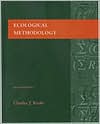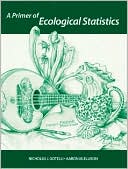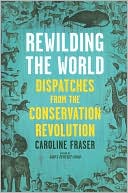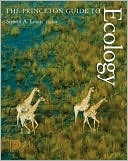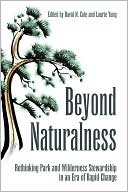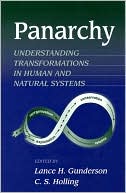Ecological Methodology
This coherent text translates the methods of statisticians into "ecological English" so that students may readily apply these methods to the real world. Ecological Methodology, Second Edition provides a balance of material on animal and plant populations. It teaches students of ecology how to design the most efficient tests in order to obtain maximum precision with minimal work. The first part of the text focuses on biological and technical issues in statistical methodology. Students learn...
Search in google:
This coherent text translates the methods of statisticians into "ecological English" so that students may readily apply these methods to the real world. Ecological Methodology, Second Edition provides a balance of material on animal and plant populations. It teaches students of ecology how to design the most efficient tests in order to obtain maximum precision with minimal work. The first part of the text focuses on biological and technical issues in statistical methodology. Students learn about advances that have been made in designing better sampling devices, along with the techniques and equipment used for sampling. The second part deals with creating solid statistical design, and presents all methods that are well-known to statisticians in a language and context that students will easily understand. Booknews Explains statistical methodology that is general to ecological field measurements. Contains sections on estimating abundance in animal and plant populations, spatial patterns in animal and plant populations, sampling and experimental design, estimating community parameters, and estimation of survival rates. For most statistical calculations discussed, FORTRAN programs are supplied. Computer-literate students can do these calculations in EXCEL or other spreadsheets or in Visual Basic. For students in ecology with basic knowledge of statistics presented in a one- or two-semester course. Annotation c. by Book News, Inc., Portland, Or.
I. Ecological Data. 1. Estimating Abundance in Animal and Plant Populations. 2. Estimating Abundance: Mark-Recapture Techniques. 3. Estimating Abundance: Removal Methods and Resight Methods. 4. Estimating Abundance: Quadrat Counts. 5. Estimating Abundance: Line Transects and Distance Methods.II. Spatial Pattern in Animal and Plant Populations. 6. Spatial Pattern and Indices of Dispersion.III. Sampling and Experimental Design. 7. Sample Size Determination and Statistical Power. 8. Sampling Designs: Random, Adaptive, and Systematic Sampling. 9. Sequential Sampling.10. Experimental Designs. @PARTHEAD IV. Estimating Community Parameters.11. Similarity Coefficients and Cluster Analysis.12. Species Diversity Measures.13. Niche Measures and Resource Preferences.V. Ecological Miscellanea.14. Estimation of Survival Rates.15. The Garbage Can.Appendices.References.Index.
\ BooknewsExplains statistical methodology that is general to ecological field measurements. Contains sections on estimating abundance in animal and plant populations, spatial patterns in animal and plant populations, sampling and experimental design, estimating community parameters, and estimation of survival rates. For most statistical calculations discussed, FORTRAN programs are supplied. Computer-literate students can do these calculations in EXCEL or other spreadsheets or in Visual Basic. For students in ecology with basic knowledge of statistics presented in a one- or two-semester course. Annotation c. by Book News, Inc., Portland, Or.\ \
